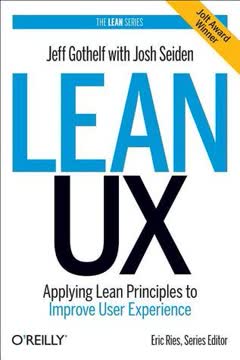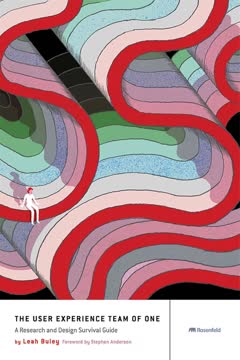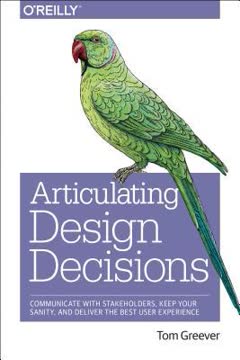Key Takeaways
1. Interviewing users is crucial for understanding their needs and driving innovation
To design for users, you must begin with a deep understanding of users. If you don't already have that understanding, you need to do some form of user research.
User-centered design is now the norm in many industries, but truly understanding users requires going beyond assumptions and directly engaging with them. Interviewing allows designers and researchers to:
- Uncover unmet needs and pain points that users may not explicitly state
- Gain context around how products or services fit into users' lives
- Challenge internal assumptions and biases about users
- Generate innovative ideas based on real user insights
Effective interviewing involves more than just asking questions - it requires careful preparation, active listening, and synthesis of findings. When done well, user interviews can provide invaluable insights that drive product strategy and innovation.
2. Embrace the participant's worldview and check your own at the door
Check your worldview at the door.
Suspend judgment and approach each interview with an open mind. This allows you to:
- Truly hear and understand the participant's perspective
- Notice details and insights you may have otherwise missed
- Build rapport and trust with the participant
Practical ways to embrace the participant's worldview:
- Use their language and terminology, even if it differs from your own
- Ask about their processes and reasoning without presuming you know the answers
- Be curious about apparent contradictions rather than trying to resolve them
- Restrain the urge to educate or correct the participant
By setting aside your own assumptions and expertise, you create space to learn something genuinely new and unexpected from each interview.
3. Prepare thoroughly but remain flexible during interviews
Leading the interview successfully comes down to you. Go ahead and refer to the field guide as you need to, but don't let it run the interview.
Balance structure and spontaneity in your approach:
- Develop a detailed interview guide with key questions and topics
- Allow the conversation to flow naturally, following interesting threads
- Use the guide as a reference, not a strict script
Key preparation steps:
- Define clear research objectives with stakeholders
- Create a screening process to recruit appropriate participants
- Prepare any stimuli or activities to use during the interview
- Plan logistics like location, recording equipment, and consent forms
During the interview, be prepared to deviate from your plan. The most valuable insights often come from unexpected directions, so remain attentive and follow up on intriguing comments or behaviors.
4. Ask open-ended questions and follow up to uncover deeper insights
You need a broad set of question types in order to make this happen.
Craft questions strategically to elicit rich, detailed responses:
- Start with broad, open-ended questions to understand context
- Follow up with more specific probes to clarify and expand on key points
- Use a variety of question types to explore different aspects of the topic
Effective question types:
- Descriptive: "Can you walk me through how you typically...?"
- Comparative: "How does this compare to...?"
- Hypothetical: "If you could design the ideal solution, what would it look like?"
- Reflective: "Looking back, what would you do differently?"
Remember to listen actively and allow silence after asking a question. Often, participants need time to reflect and will provide more thoughtful, detailed responses if given space to think.
5. Create a comfortable environment and build rapport with participants
Building rapport is what makes for great interviews.
Establish trust and comfort to encourage open, honest responses:
- Be warm and approachable in your demeanor
- Explain the purpose and process of the interview clearly
- Respect the participant's time and perspective
Practical rapport-building techniques:
- Start with easy, non-threatening questions to warm up
- Use appropriate self-disclosure to create connection
- Demonstrate active listening through body language and verbal cues
- Acknowledge and validate the participant's experiences and emotions
Remember that building rapport is an ongoing process throughout the interview. Continuously monitor the participant's comfort level and adjust your approach as needed to maintain a positive, productive dynamic.
6. Document interviews effectively using various methods
Although you might be tempted to try, you simply can't catch everything by taking notes.
Use multiple documentation methods to capture a comprehensive record:
- Audio or video recording for complete verbal exchanges
- Note-taking for key points and initial impressions
- Photography for visual context and artifacts
Documentation best practices:
- Obtain informed consent for all recording methods
- Test equipment before the interview to ensure quality
- Take photos discretely to avoid disrupting the conversation
- Conduct a debrief immediately after the interview to capture fresh insights
While recording provides a complete record, active note-taking during the interview can help you stay engaged and identify key themes in real-time. Find a balance that works for you and allows you to remain present with the participant.
7. Analyze and synthesize data to generate actionable insights
Working with research data is a combination of analysis, or breaking larger pieces into smaller ones (for example, interviews and transcripts into anecdotes and stories) and synthesis, or combining multiple pieces into something new (for example, building themes, implications, and opportunities).
Transform raw data into meaningful insights through a structured process:
- Initial review: Skim transcripts and notes to identify emerging themes
- Detailed analysis: Code and categorize data into relevant topics
- Pattern recognition: Look for recurring themes and unexpected findings
- Synthesis: Combine insights to form higher-level conclusions
- Ideation: Generate potential solutions or opportunities based on insights
Effective analysis techniques:
- Create affinity diagrams to group related ideas
- Use journey maps to visualize user experiences over time
- Develop personas to represent key user archetypes
- Craft "How Might We" statements to frame design challenges
Remember that analysis is an iterative process. Be open to revisiting and refining your insights as you dig deeper into the data and discuss findings with your team.
8. Optimize interviews by troubleshooting common problems and improving skills
An interview is an interaction between two humans. Or throw in a colleague and a spouse, and now it's an interaction between four humans—irrational, emotional, language-using, unpredictable humans.
Adapt to challenges that arise during interviews:
- Reticent participants: Build trust gradually and adjust questioning style
- Overly talkative participants: Gently redirect to key topics
- Unexpected contexts: Remain flexible and find opportunities in surprises
- Safety concerns: Trust your instincts and prioritize personal safety
Continually improve your interviewing skills:
- Practice active listening in everyday conversations
- Seek feedback from colleagues or mentors
- Review recordings of your interviews to identify areas for improvement
- Stay current with industry best practices and emerging techniques
Remember that even experienced interviewers face challenges. Approach each interview as a learning opportunity, reflecting on what worked well and what could be improved for next time.
9. Use research to drive organizational change and product development
You want to be sure that data becomes insights, and insights become opportunities—for new products, features, services, designs, and strategies, but also new opportunities for teams to embrace a user-centered approach to their work.
Translate insights into action within your organization:
- Craft compelling narratives from your research findings
- Connect insights to specific business goals and metrics
- Involve stakeholders throughout the research process to build buy-in
- Advocate for ongoing user research as a core business practice
Strategies for driving change:
- Create visually engaging presentations and reports to share findings
- Facilitate workshops to apply insights to current projects
- Develop a repository of user insights accessible to the entire organization
- Measure and communicate the impact of user research on business outcomes
Remember that driving organizational change takes time and persistence. Continuously demonstrate the value of user research through both small wins and long-term strategic impact to build a user-centered culture.
Last updated:
FAQ
What's "Interviewing Users: How to Uncover Compelling Insights" about?
- Purpose of the book: "Interviewing Users" by Steve Portigal is a guide to conducting user interviews to gather insights that inform design and business decisions.
- Target audience: It is aimed at designers, engineers, strategists, and marketers who want to improve their understanding of user needs and behaviors.
- Content overview: The book covers the entire process of user interviews, from planning and conducting interviews to analyzing and applying the insights gained.
Why should I read "Interviewing Users: How to Uncover Compelling Insights"?
- Skill development: The book provides practical techniques for conducting effective user interviews, a crucial skill for anyone involved in product development.
- Improved outcomes: By understanding user needs better, you can create products and services that truly meet those needs, leading to greater success.
- Comprehensive guide: It offers a step-by-step approach, making it accessible for both beginners and experienced professionals looking to refine their skills.
What are the key takeaways of "Interviewing Users: How to Uncover Compelling Insights"?
- Interviewing as a skill: Interviewing is a learned skill distinct from everyday conversation, requiring deliberate techniques and practice.
- User-centered design: Understanding users deeply is essential for creating products that resonate with them and fulfill their needs.
- Empathy and insights: Conducting interviews not only provides data but also builds empathy and can lead to innovative solutions through reframing problems.
How does Steve Portigal define "interviewing" in the context of user research?
- Beyond conversation: Interviewing is more than just talking to people; it involves structured techniques to gather accurate and nuanced information.
- Contextual understanding: It often involves observing users in their natural environments to understand their behaviors and the meaning behind them.
- Framework for insights: The process includes making sense of the data through analysis and synthesis to inform design and business strategies.
What are the best practices for preparing for user interviews according to Steve Portigal?
- Clarify objectives: Start by defining what you hope to learn from the interviews and align with stakeholders on these goals.
- Recruit the right participants: Identify key characteristics for your sample and use a screener to ensure participants meet these criteria.
- Create a field guide: Develop a detailed plan for the interview, including questions and activities, to guide the conversation while allowing flexibility.
How does Steve Portigal suggest building rapport with interview participants?
- Be genuine: Approach interviews with a sense of curiosity and respect for the participant's expertise.
- Social graces: Accept social gestures like offers of drinks to align with participants' expectations and make them comfortable.
- Selective self-disclosure: Share personal information only when it helps the participant feel more at ease and willing to share.
What techniques does Steve Portigal recommend for asking effective questions during interviews?
- Open-ended questions: Use questions that encourage detailed responses rather than yes/no answers.
- Follow-up questions: Be prepared to ask additional questions to dig deeper into the participant's initial responses.
- Silence as a tool: Allow pauses after asking questions to give participants time to think and elaborate on their answers.
How should one document user interviews according to "Interviewing Users"?
- Audio or video recording: Capture the full conversation to ensure no details are missed and for later analysis.
- Note-taking: While taking notes, focus on key points and insights rather than trying to transcribe everything.
- Photographs and sketches: Use visuals to capture the context and any artifacts that are part of the participant's environment.
What are some common challenges in user interviews and how does Steve Portigal suggest overcoming them?
- Reticent participants: Identify the cause of discomfort and adjust your approach, such as changing the topic or interviewer.
- Over-talkative participants: Allow them to share their stories but gently steer the conversation back to your questions.
- Unexpected situations: Be flexible and adapt to changes, such as interviewing in a different setting or with additional participants.
How does "Interviewing Users" suggest analyzing and synthesizing interview data?
- Topline report: Start with a preliminary report of emerging themes and insights to guide further analysis.
- Detailed processing: Review transcripts and notes to identify patterns, themes, and key quotes.
- Collaborative synthesis: Work with your team to present interviews as case studies and develop a shared understanding of the findings.
What role does user research play in organizational leadership according to Steve Portigal?
- Strategic tool: User research can drive strategic decisions by providing a deeper understanding of customer needs and behaviors.
- Cultural shift: Encouraging a user-centered approach can lead to a more empathetic and innovative organizational culture.
- Advocacy: Researchers should champion the value of user insights and work to integrate them into the organization's processes.
What are some of the best quotes from "Interviewing Users" and what do they mean?
- "Interviewing is a skill that at times can be fundamentally different than what you do normally in conversation." This highlights the need for deliberate techniques in interviews, beyond casual conversation.
- "The insights that come from studying users not only inform design but also inspire it." This emphasizes the dual role of user research in providing information and sparking creativity.
- "Interviewing creates a shared experience, often a galvanizing one, for the product development team." This underscores the team-building and empathy-building benefits of conducting user interviews.
Review Summary
Interviewing Users receives high praise from readers for its practical insights on conducting user research interviews. Reviewers appreciate the book's comprehensive coverage of interview techniques, from preparation to analysis. Many find it valuable for both beginners and experienced researchers. The book is commended for its easy-to-read style, real-world examples, and actionable advice. Some readers note its focus on in-person interviews and wish for more on remote techniques. Overall, it's considered an essential resource for UX professionals and researchers.
Similar Books










Download PDF
Download EPUB
.epub digital book format is ideal for reading ebooks on phones, tablets, and e-readers.




